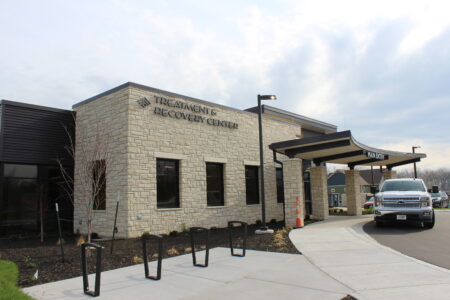Friends have made donating blood together a tradition

photo by: Autumn Bishop/LMH Health
Linda Kucza, left, and Laurie Ziegler.
What if saving a life was as easy and fun as spending an hour with a friend? For Laurie Ziegler and Linda Kucza, that’s exactly what blood donation has become — a life-saving tradition wrapped in laughter, friendship and a little friendly competition.
How it started
Ziegler, a reading and math intervention teacher, and Kucza, a parent involvement facilitator, first met while working at New York Elementary School. One day, someone came to speak to the staff about donating blood.
“We both thought, “Why not?” Ziegler said. “We went together, donated for the first time and just had a blast.”
That experience started a tradition. They tried to get others to join, mentioning it during staff meetings and might get an additional person to donate, but in the end, it was just the two of them that kept coming back.
“They must not have had as much fun as we did,” Kucza chuckled.
Giving back in a meaningful way
Blood donation wasn’t a new idea for Kucza. Years before, she’d heard about tithing at church but didn’t have the financial means as a young, single parent. That’s when someone mentioned donating blood.
“I still tell people that if you can’t give money, you can likely donate blood and make a difference in someone’s life,” Kucza said.
People who have type O negative blood are called “universal donors.” This means that a person with any other blood type can safely receive O negative blood. It doesn’t contain antigen markers that other blood types recognize as incompatible, meaning this type of blood can be given to anyone in an emergency.
Ziegler is a universal donor and knows that her blood has helped save lives.
“I get postcards from the blood bank saying that my blood has helped this person or was given to this person,” she explained. “I love those stories because I know my donation has been impactful.”
Making it a tradition
When they began donating together, Ziegler and Kucza attended blood drives at different locations and decided they’d like to start donating at drives hosted at the LMH Health.
“It’s a great environment,” Ziegler said. “And if there were ever any problems, we know that we’re in the safety of the hospital.”
You can donate whole blood every 56 days (seven weeks) for a total of six donations a year. LMH Health and the Community Blood Center host blood drives at the Main and West Campuses every eight weeks. This means that if you donate whole blood at LMH, you’ll be eligible to donate again at the next drive. You can find dates and locations of upcoming drives and register for a donation time at savealifenow.org.
When you arrive at the drive, you’ll show your photo ID and then answer a series of questions about your health history. After that, you have a one-on-one screening similar to a mini physical. The technician will check your temperature, pulse and blood pressure. There’s also a quick finger stick test to determine the amount of hemoglobin in your blood. If you meet all the requirements, you’re then able to donate.
“There have been times when one of us doesn’t pass all the health checks. We stick around and sit by the other’s side, talk to each other and give each other a bad time,” Kucza said.
When the friends are both able to donate, they often lay on beds right next to each other. Ziegler joked that they often tell the blood technicians that they’re racing against each other to see who can complete their donation the fastest.
Do they know who holds the record for the volume of blood donated? Lots of laughter fills the room, but they haven’t kept track of who is in the lead.
“Maybe we should start keeping track. There could be a traveling trophy,” Kucza said with a smile.
Why it matters
While there may not be an actual trophy, both Ziegler and Kucza would like to see more people volunteer to donate blood. It’s a small way you can give back to the community.
“You can meet other people while you’re donating, and you’ve got the time to spare when you’re sitting in the donation chair,” Ziegler said. “I’m a pretty social person and it’s great to meet others who are giving their blood to save lives.”
Kucza reiterated that blood donation is another way to serve the community, even if you haven’t thought of it before.
“Even if you don’t have time or money to donate, this is something you can do for free and you can do it more than once a year,” she said. “It’s safe, easy, and a great way to help save lives.”
— Autumn Bishop is the marketing manager and content strategist at LMH Health, which is a sponsor of the Lawrence Journal-World’s health section.






